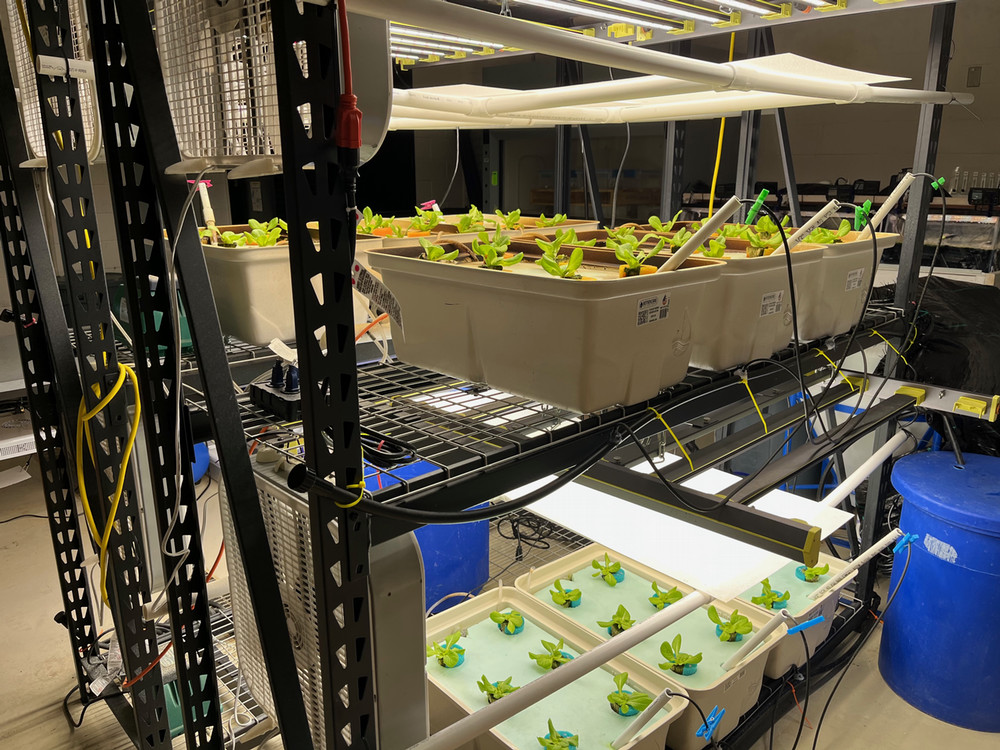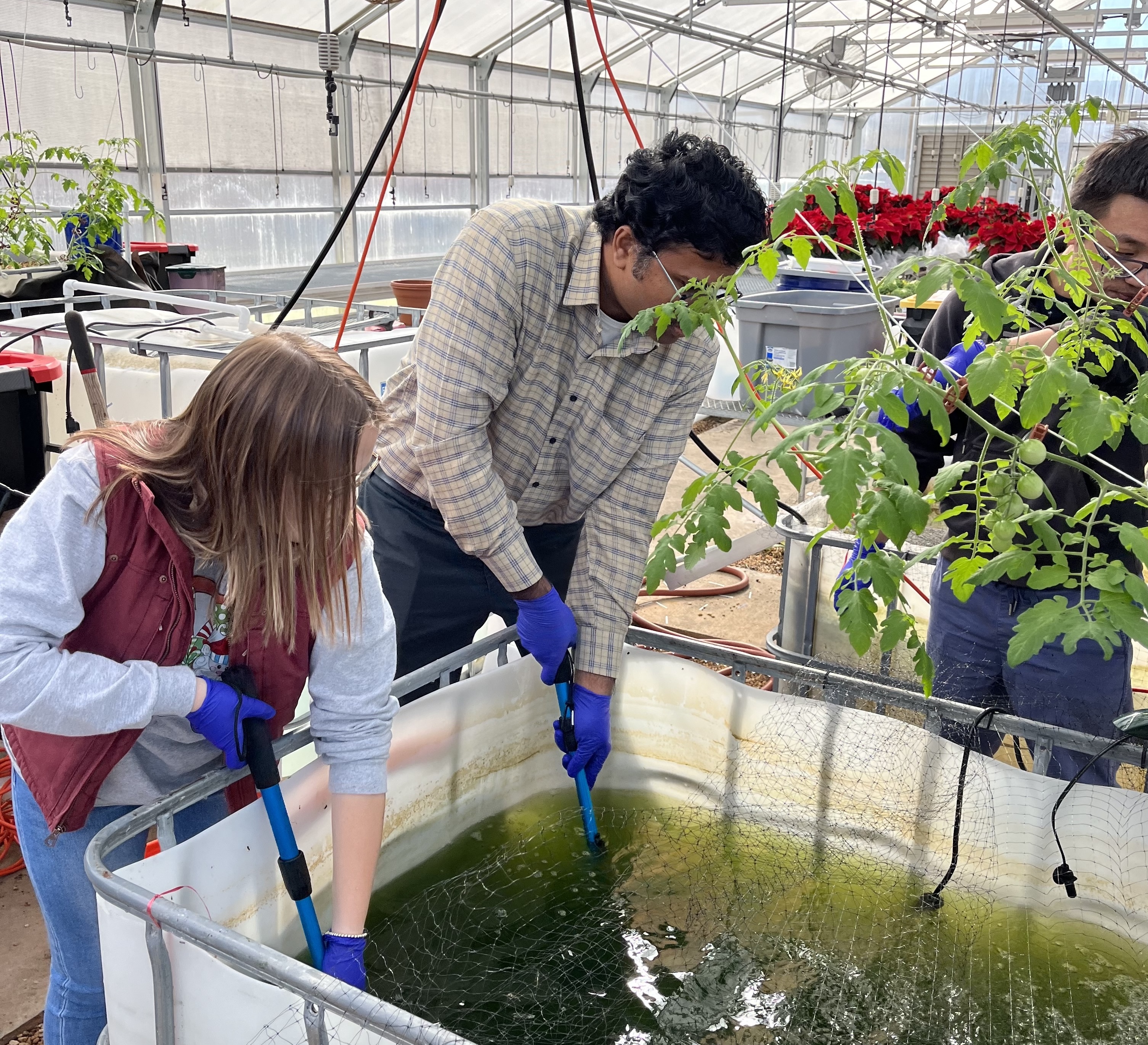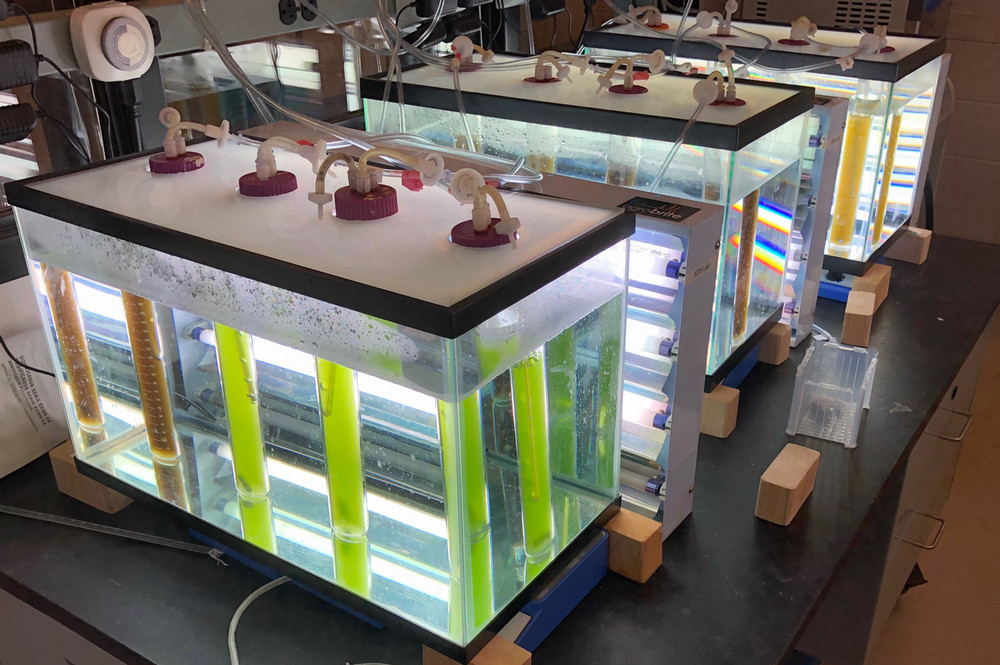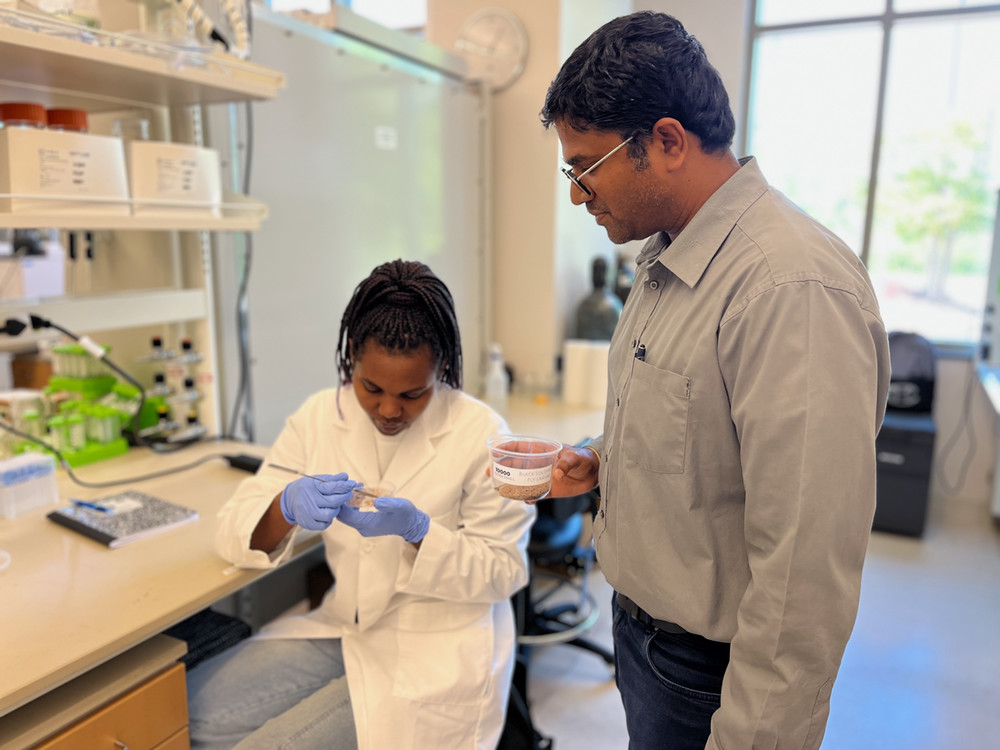Research
Poultryponics! Recycling poultry processing wastewater back into crop irrigation
The poultry industry is a major generator of nutrient-rich wastewater. This water supply is currently being treated as a waste at a significant expense to industry—and ultimately—consumers. Repurposing this water supply for use in crop production has the potential to significantly reduce treatment costs, increase food production, and reduce the overall impact on the environment. We have constructed and operated a pilot scale "poultryponics" system for over two years in which we have successfully grown lettuce using treated poultry processing wastewater. To date, we have shown that this system can eliminate all detectable Salmonella, E. coli, and Campylobacter (3 nasty food pathogens) without resorting to expensive membrane filtration systems. With proper nutrient supplementation, we can achieve lettuce yields on par with traditional hydroponics (which uses only chemical fertilizer).

Aquaponics! Producing crops from aquaculture wastewater
Aquaponics recycles the waste nutrients (mainly nitrogen and phosphorus) from fish farming to produce hydroponic crops. Auburn University is home to one of the largest pilot scale aquaponics facilities on a university campus. The system produces tilapia and a range of produce that is sold to local markets and supplies Tiger Dining, Auburn University's student dining service. Because it converts fish waste (a potential environmental pollutant) back into food, aquaponics is considered a sustainable method of food production. We have developed and tested new system configurations in aquaponics that increase both fish and plant yields; improving yield is one of the most pressing issues toward growing this industry. We also partner with four regional high schools where we support aquaponics as part of their curriculum. Each school was provided with 4 pilot aquaponics systems that their students operate.

Algae! Growing algae on wastewaters to create animal feed
We are cultivating algae on high strength wastewaters from agricultural operations in order to make animal feeds. Examples of wastewaters include manure anaerobic digestate and rendered poultry waste solids. These wastewaters are challenging to treat using conventional treatment processes but we have developed processes that not only treat the waste but also make it valuable again. The algae we produce with this process are rich in omega3 (good) fats and protein and we have tested feeding them to small aquatic crustaceons with future plans to make fish feed.

Poultry! Upcycling solid wastes from poultry processing into valuable products
Many of the solid wastes from poultry processing are currently land applied, which has resulted in extreme foul odors that impact rural communities. We are investigating better ways to land apply that reduce odor as well as new means to upcycle these wastes into valuable products. As an example, we have successfully demonstrated feeding these materials to Black Soldier Fly Larvae as a way to create an animal feed that provides livestock with enhanced resistance to disease. We also have developed and have a patent pending on a novel rendering process that generates a high value protein supplement. These outcomes can make the poultry industry more competitive, create jobs, while reducing negative impacts on rural communities.

Greenhouses! Decarbonizing vegetable production in greenhouses
We are working with a team of 18 other research groups on technologies and practices aimed at decarbonizing greenhouse vegetable production. This involves developing novel plant varietals and growth practices that lower demand for greenhouse climate control which is the biggest energy consumer. We are also investigating alternative energy sources like biomass and use of wastewater to cultivate crops. Learn more on the GRACE project's dedicated website: https://eng.auburn.edu/bsen/research/grace/index

Water! Investigation and modeling of taste and odor compounds in drinking water
Drinking water reservoirs across the Southeastern US often suffer from periods of muddy odor. These odors are caused by the release of certain compounds such as MIB and geosmin by cyanobacteria and actinobacteria. We are using molecular approaches (quantitative PCR and sequencing) to identify the organisms responsible for taste and odor episodes. We also are integrating this data into empirical models in order to better predict when episodes will occur. This work is being funded by the USGS, Auburn Water Works, Opelika Utilities, and Columbus Water Works.

